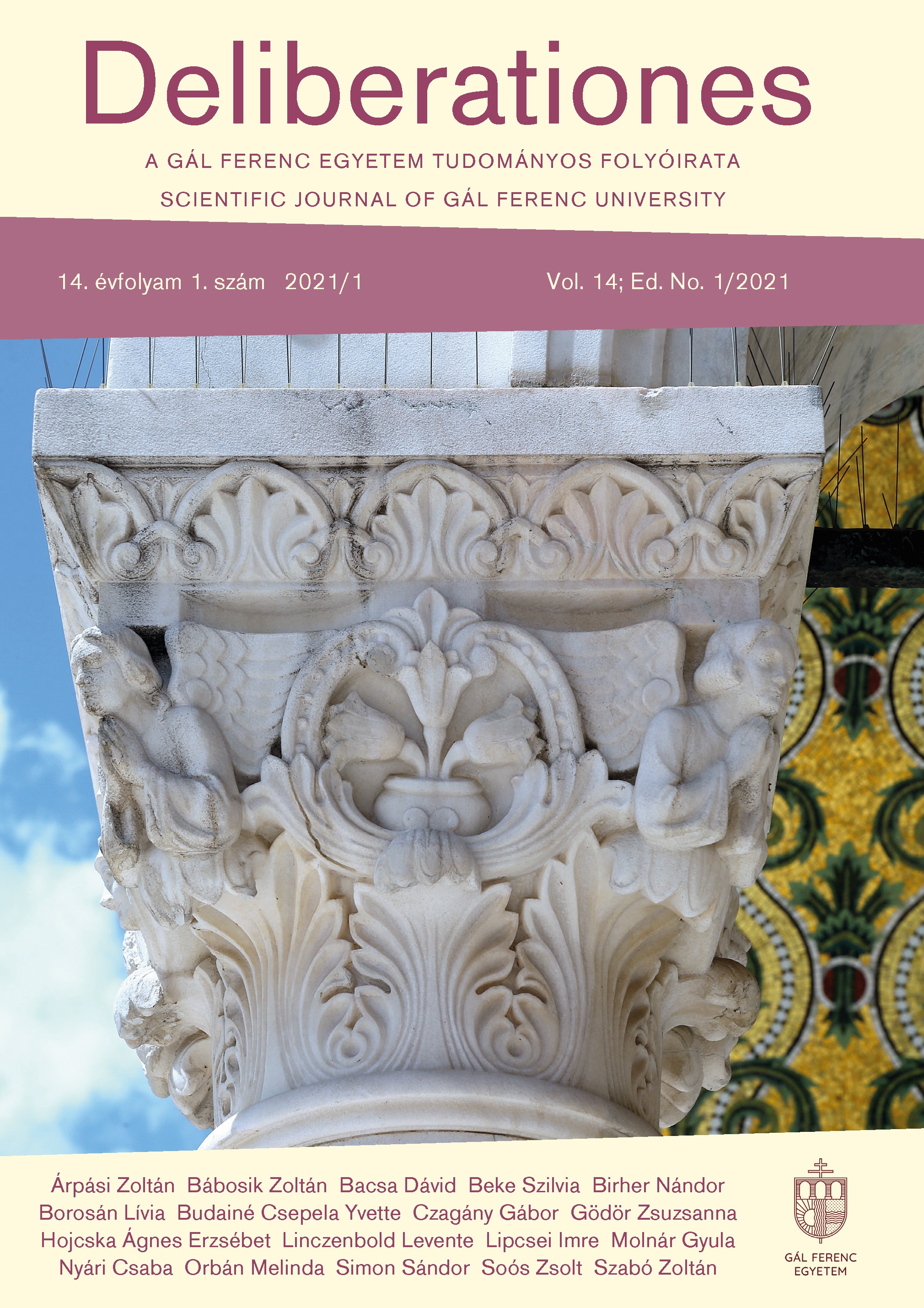Abstract
Launching of the community catering reform with its almost a decade-length history ended up the order of 37/2014 (IV.30.) EMMI, which is about the nutritional and medical regulations of community catering. The order, based on Food Based Dietary
Guidelines for different age groups together with European recommendations, has been refashioned the previously not ideal picture demonstrated by school dinners’ (MENZA) reviews. In order to develop a health-conscious diet, catering has been provided as an option, but for this we need to maintain the satisfaction of the users.
In the practical part of my study I have done a survey in three age groups (kindergarten, primary and secondary school) by self-made questionnaires whose primary aim was to assess how much children and their parents are satisfied with community catering and how much their nutritional habits and knowledge of raw materials/ingredients depend
on their usage of the service. From 300 handed-out questionnaires 256 came back with results. Besides them showing the side of the supply I have made a semi-structural interview with the director of the local community catering company. My data were
processed by using Microsoft Excel and SPSS programs.
From the results I would underline there is a significant relation between satisfaction and the length of resourcing the service focusing only those who use the service for at least 2-5 years or more than 5 years. Hence, there is a negative correlation between the age and satisfaction, namely the elder the respondent is, the less satisfied he is.
In connection with satisfaction the respondents have given a sensible reaction of the conditions from which the strongest relations I have found were the quality of the serving and the temperature of the meal. At the same time there is a stronger relation between the quality of the meal and its taste.
References
Bakacs, M., Kaposvári, C., Nagy , B., Varga, A., & Zentai, A. (2018). Országos iskolai MENZA körkép 2017. Budapest: Országos Gyógyszerészeti és Élelmezés-egészségügyi Intézet. https://ogyei.gov.hu/dynamic/Orszagos-iskolai-MENZA-korkep2017-181212-2-web.pdf
Bujdosó, Z., Kerekesné Mayer, Á., & Ujvári, K. (2012). Gasztornómia a vendéglátásban. Magyarország: Károly Róbert Főiskola. Letöltés dátuma: 2020. 01. 02., forrás: Digitális tankönyvtár web site: ttps://regi.tankonyvtar.hu/hu/tartalom/
tamop412A/2010-0010_12_Gasztronomia_a_vendeglatasban/2895/index.scorml
Caballero B (2007). „The global epidemic of obesity: An overview”. Epidemiol Rev 29, 1-5. https://doi.org/10.1093/epirev/mxm012
ELTE Pedagógiai és Pszichológiai Kar,(2020) Reflektor fényben a kamaszok egészsége és jóléte https://www.ppk.elte.hu/content/reflektorfenyben-a-kamaszok-egeszsegees-jollete.t.38869
Emberi Erőforrások minisztériuma (2014) 37/2014. (IV. 30.) EMMI rendelet a közétkeztetésre vonatkozó táplálkozás-egészségügyi előírásokról. (2014. 04 30). Letöltés dátuma: 2020. 01. 02., forrás: Netjogtár: http://njt.hu/cgi_bin/njt_doc.
cgi?docid=169011.268149#foot4
Greiner, E., Dánielné Rózsa, Á., & Kovács, A. V. (2009). Országos iskolai MENZA körkép 2008. Budapest: Országos Élelmezés-és Táplálkozástudományi Intézet. Letöltés dátuma: 2019. 12 03, forrás: http://ogyei.gov.hu/dynamic/oeti_forms/menza2008.pdf
Horváth , I. (2016. 09 29). Közétkeztetés. Parlament Infojegyzet(2016). Magyarország: ORSZÁGGYŰLÉS HIVATALA KÖZGYŰJTEMÉNYI ÉS KÖZMŰVELŐDÉSI IGAZGATÓSÁG KÉPVISELŐI INFORMÁCIÓS SZOLGÁLAT. Letöltés dátuma:
01 02, forrás: https://www.parlament.hu/web/guest/infojegyzet-2016
Hungast, M. (2015. 01 30). Intézményi elégedettségmérés elemzése. Magyarország. Letöltés dátuma: 2020. 01. 20, forrás: www.hungast.hu
Inchley, J., Currie, D., Jewell, J., Breda, J., & Barnekow, V. (2017). Adolescent obesity and related behaviours: trends and inequalies in the WHO Europaen Region, 2002-2014.
Copenhagen, Denmark: World Health Organization Regional Office for Europe. Letöltés dátuma: 2020. 02 18, forrás: http://www.hbsc.org/publications/international/
Kai, M. (2018). A fittség és rendszeres fizikai aktivitás szerepe az egészségnevelésben
Fókuszban a NETFIT. In E. Antal, & R. Pilling (Eds), A magyar gyermekek és fiatalok életmódja-táplálkozás, testmozgás és lélek Fehér Könyv (old.: 122-125). Budapest: TÉT Platform.
Kenesei, Z. (2017). A vevői elégedettség mérésének lehetőségei több. Statisztikai Szemle, 95(1), 29-50. https://doi.org/10.20311/stat2017.01.hu0029
Kovács, V. A., Kaj, M., Király, A., & Csányi, T. (2020). Mennyit mozogtak a gyermekek a koronavírus-járvány hatására bevezetett korlátozások alatt? In:E. Antal , & R. Pilling, (Eds) A magyar lakosság életmódja járványhelyzet idején: táplálkozás,
testmozgás és lélek Budapest: TÉT Platform Egyesület.
Kubányi, J., & Szűcs, Z. (2020). Változások a karanténidőszakban a GYERE® programban részt vevő iskolás gyermekek életében. In:E. Antal , & R. Pilling, (Eds) A magyar lakosság életmódja járványhelyzet idején: táplálkozás, testmozgás és lélek
Budapest: TÉT Platform Egyesület.
Molnár, S., Ács, A., Kádár, K. M., Czékmán , E., Csajbókné, É. C., & Mák, E. (2019).
Az óvodáskorú gyermekek közétkeztetésének megítélése a szülők szemszögéből. Új Diéta, 28(5), 25-28.
Schreiberné Molnár, E., Nagy-Lőrincz, Z., Nagy , B., Bakacs, M., Kis, O., Sarkadi-Nagy
, E., & Martos, É. (2017). Országos Táplálkozási ás Tápláltsági Állapot Vizsgálat OTÁP 2014 A magyar lakosság vitaminbevitele. Orvosi Hetilap, 158(33), 1302-1313. https://doi.org/10.1556/650.2017.30832
